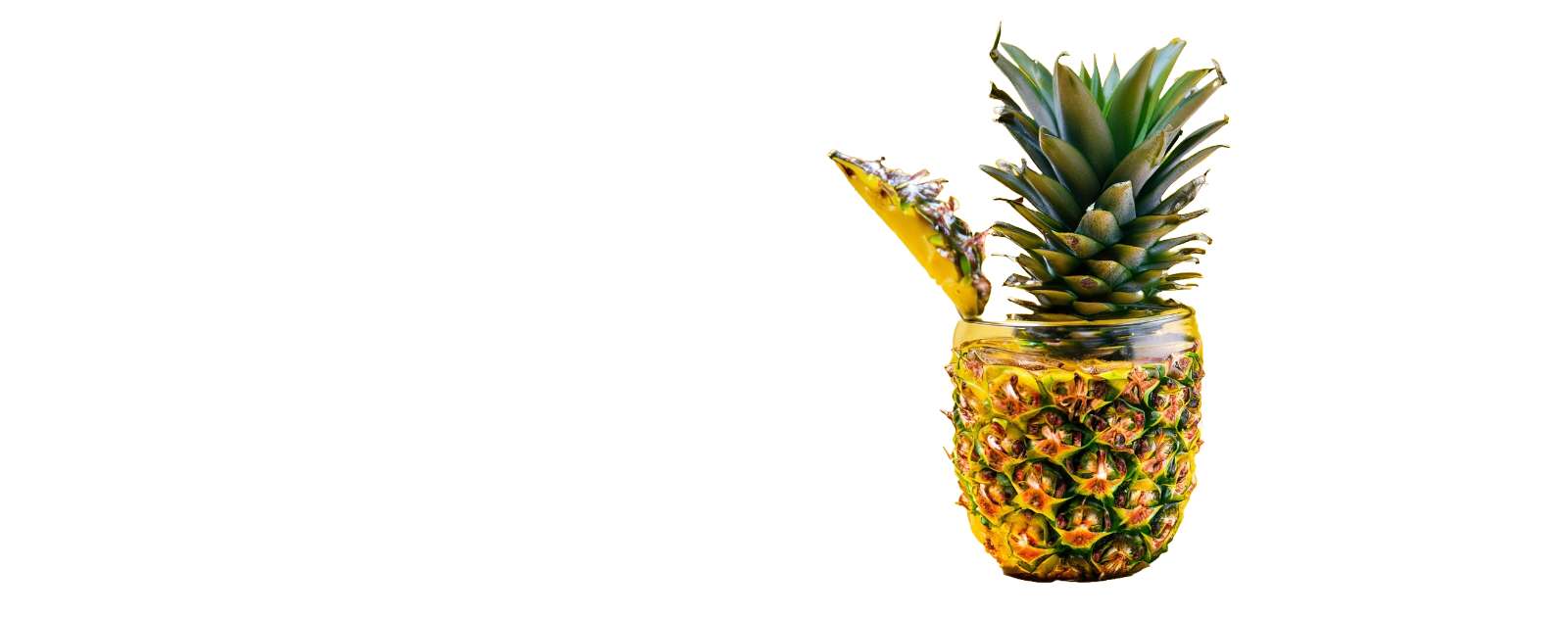Have you ever cut open a pineapple only to find it turning brown? Or perhaps you’ve noticed your once-fresh pineapple has changed color inside the fridge. Brown spots, discoloration, or even mold can make anyone skeptical about consuming the fruit. While sometimes the brown color is merely a sign of overripeness, other times it can be an indicator of the fruit going bad.
Pineapple juice turning brown also raises eyebrows. Is it still good to drink? This article dives deep into understanding the signs that your pineapple has gone bad, providing insights and safety precautions to ensure you enjoy this tropical delight without compromising your health.
Here’s a quick summary of the article:
Pineapples can develop brown spots due to ripening, oxidation, or spoilage. Understanding the difference is crucial for safe consumption. Storing cut pineapples properly can prevent premature browning. A brown appearance doesn’t always indicate spoilage, but understanding signs of decay enhances the eating experience.
Now, Let’s dive into the Comprehensive Guide: Understanding Pineapple’s Browning and Its Edibility.
My Pineapple Has Brown Spots: Decoding the Mystery
Have you ever sliced open a pineapple and noticed peculiar brown spots? It’s a common sight, and though it can raise an eyebrow or two, it’s essential to understand the reason behind it. Just like humans show signs of aging, fruits too, undergo changes as they ripen. Brown spots could be due to the natural ripening process. On the other hand, they could also hint at the onset of spoilage. But how do we differentiate between the two?
It’s not uncommon to second-guess the quality of our tropical treat when we observe these color variations. But fret not! These color changes are often a part of the pineapple’s maturation. However, while age-induced browning is usually harmless, we should stay vigilant. External factors, such as fungus or improper storage, can also cause these spots. So, is there a foolproof way to tell if your pineapple is just ripe or on its way to the bin? We’ll delve into that and more.
Did you know the enzyme bromelain, found in pineapples, causes browning? This enzyme breaks down proteins and can result in color changes. Though these enzymatic reactions may sound complex, in simple terms, it’s like how an apple turns brown once cut. But then arises the question, can we prevent these changes? Is there a way to enjoy our pineapples without the constant worry of these brown invaders?
When it comes to fruits, appearances can be deceptive. Just like you wouldn’t judge a book by its cover, it’s unfair to label a pineapple bad solely based on some brown spots. However, keeping an eye out for other signs of spoilage is a smart move. Does your pineapple have a foul odor? Is it excessively soft or mushy? These are more reliable indicators than mere color variations. Remember, nature isn’t about perfection. It’s about taste, nourishment, and the joy of savoring what it offers!
Cut Pineapple’s Transformation: Why It Turns Brown
you all knew, the joy of biting into a freshly cut pineapple! But what if that juicy slice starts turning brown? Does it take away from its taste? Or worse, is it harmful? Once a pineapple is sliced open, it becomes a playground for reactions. And the main culprit? Oxygen! When the juicy insides of this tropical delight meet the air, they undergo a process called oxidation. Think of it as the pineapple’s version of rusting.
But here’s a fun fact: browning doesn’t necessarily equate to spoilage. Much like how a bicycle left out in the rain rusts but remains functional, a brown pineapple slice may still be good to eat. However, no one wants their fruit looking like it’s seen better days. So, what’s the magic trick to keep those slices as fresh as the morning sun? The answer lies in acidity. Lemon juice, with its low pH, can be a savior. A light brush of this tangy liquid can act as a protective barrier, slowing down the browning process.
Now, if you’ve stored your pineapple slices in the fridge and they’ve turned brown, it doesn’t necessarily mean they’re spoiled. Cold temperatures can sometimes accelerate the browning process. But before you toss them into the trash, sniff them quickly. They’re probably still good to eat if they smell fresh and retain their firm texture. A little browning never hurt anyone, but consuming spoiled food? That’s a different story.
Here’s a nifty little trick for the next time you want to store cut pineapples. Instead of just tossing them into a container, try layering the slices with a sheet of cling film in between. This minimizes their exposure to air, reducing the chances of oxidation. Remember, delaying the encounter between the fruit’s flesh and the environment is key.
Lastly, while storing pineapples, be wary of the container you use. Opt for air-tight containers, preferably glass ones. Plastic containers sometimes interact with the fruit’s acids, leading to an off-taste. And no one wants a plastic-flavored pineapple.
Final Thoughts
A pineapple turning brown might seem trivial in the grand spectrum of fruit dilemmas. But it’s these small things that often pique our curiosity the most. The world of pineapples, with its myriad colors and flavors, is fascinating.
As we’ve seen, a bit of browning here and there isn’t the end of the world. But understanding the reasons behind it and knowing when to consume or discard can enhance our overall experience. After all, it’s not just about eating; it’s about relishing and understanding what we eat. So, you’ll know better the next time you see a brown spot on your pineapple. Happy munching!

